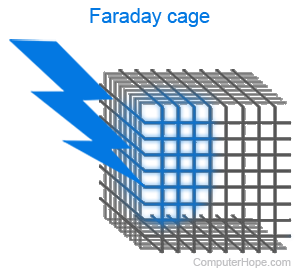Crafting a Faraday Cage for Outdoor Adventures: Advice and Tricks
As you consider camping trips, your mind may wander to the great outdoors, bonfires, and the pure pleasures of nature. However, in our increasingly technology-driven world, the question often arises: how do you safeguard your electronic devices from unexpected threats? One smart solution that can provide peace of mind is a Faraday cage. Originally designed to protect against electromagnetic fields, a Faraday cage can be an indispensable resource while you're out in the wild, safeguarding your gadgets from everything from harsh weather to possible electromagnetic interference.
In this guide, we will explore important tips and tricks for creating a Faraday cage tailored to your camping needs. From grasping the basic workings of these defensive enclosures to choosing the ideal materials and sizes for your specific requirements, we've got you taken care of. Whether you are considering a compact setup for easy movement or a more long-term option, knowing how to guarantee best shielding effectiveness will help you make informed decisions. Follow along as we explore the world of Faraday cages and learn how to safeguard your devices while experiencing the great outdoors.
Comprehending Faraday Cages
A Faraday shield is a design created to shield against electromagnetic interference, delivering a barrier for delicate gadgets from different types of electromagnetic interference. Named after the physicist Michael Faraday, these cages work on the concept that an outside electric field is canceled by the placement of electrical charges on the conductor. The outcome is a protected interior space that can shield against a range of EM threats, including radio frequency signals and electromagnetic pulses.
The performance of a Faraday cage depends on its material and design. Typical materials used consist of metals like aluminum, copper, and steel metal, which are outstanding conductive materials of electricity. Every material has its advantages, affecting how efficiently it can shield against multiple frequencies. Regardless of whether RF shielded test enclosures 's a solidly built or mesh structure, the selection of materials greatly impacts the cage's efficacy and the level of protection it provides. Comprehending these features can be critical when selecting a Faraday cage for particular requirements.
In alongside its shielding ability, the design and size are key considerations to take into account when employing a Faraday cage. A shield that is too compact may not accommodate all necessary devices, while one that is too large can be ineffective in terms of space and materials. Transportable designs are offered for those who travel often, while permanent designs might be better for residential settings or disaster planning. Understanding the specific use of the shield helps in making wise choices that ensure maximum safety for your gizmos.
Key Features and Components
When selecting a Faraday cage, it’s important to consider its key features to ensure effective electromagnetic shielding. Look for cages that are intentionally built to block different frequencies, including those from electromagnetic pulses. These cages should have a tight seal to prevent gaps where signals could leak in. Additionally, ease of access is crucial—be it via openings, ports, or removable panels—allowing you to store and retrieve your electronics without compromising the cage's effectiveness.
The material plays a crucial role in the effectiveness of a Faraday cage. Materials like copper, aluminum, and steel are among the best choices due to their excellent conductivity. Copper offers superior shielding capabilities but can be more expensive, while aluminum is lightweight and cost-effective. Steel, being robust, provides a balance between durability and performance. Consider the particular needs of your camping trip to choose the suitable metal that fits your needs without adding unnecessary weight to your gear.
Finally, the design and construction of the Faraday cage matter just as much as the ingredients used. A sturdy cage might offer more robust protection, while mesh cages may be more lightweight and portable. Each type has its pros and cons depending on your intended use. If you are often on the go, look for a foldable design that allows you to carry it with ease. Ultimately, grasping the mix of features and materials will help you choose the best Faraday cage for your camping adventures and the electronics you wish to protect.
Practical Considerations for Use
When you are utilizing a Faraday cage during camping trips, it is essential to think about its portability. A compact and small design allows it more convenient to transport with your gear, making certain that you can set it up quickly no matter your location. Select a model that can be easily folded or disassembled. If RF testing equipment suppliers plan to camp in remote areas, having a cage that is both easily transportable but also sturdy against the elements will significantly improve your experience.
An additional important factor is the organization of your electronics inside of the cage. Ensure that devices are adequately cushioned to protect them from damage during transport. Employing static-resistant bags in conjunction with your Faraday cage can offer additional protection against electrostatic discharge. Be mindful of number of devices you put inside, as too many devices may impair the efficacy of the shielding due to limited spacing.
To conclude, testing and maintaining your Faraday cage is vital for confirming it provides maximum protection. Regular checks for any signs of deterioration will aid keep your gear in top condition. Prior to relying on it for significant trips, conduct tests to verify its effectiveness in blocking signals to confirm that your devices are secure from external electromagnetic disruption. By considering these essential factors, you’ll be fully prepared for your next camping adventure.
